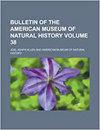中国东北晚侏罗世赫胥黎近鸟龙新种(兽足目:兽足目)
IF 3.4
2区 环境科学与生态学
Q1 BIODIVERSITY CONSERVATION
Bulletin of the American Museum of Natural History
Pub Date : 2017-04-13
DOI:10.1206/0003-0090-411.1.1
引用次数: 41
摘要
摘要最近在中国东北晚侏罗世条集山组化石层中发现了4个新的赫胥黎近鸟龙标本(PKUP V1068、BMNHC PH804、BMNHC PH822和BMNHC PH823)。这些新标本几乎完整地保存了颅骨和颅骨后骨骼。赫胥黎近鸟龙的形态特征对类人猿的特征演化具有重要意义,并对类人猿主要世系的关系提供了新的认识。赫胥黎近鸟龙与鸟类具有相同的衍生特征,如上颌骨前鼻突直,侧面无下颌外窗。然而,赫胥黎近鸟龙缺乏几个衍生的恐爪龙特征,包括外侧暴露的脾脏和专门的猛禽趾II。形态学比较强烈地表明,近鸟龙与鸟类的亲缘关系比与恐爪龙或troodontids的亲缘关系更近。赫胥黎近鸟鸟表现出许多保守的类鸟特征,与始祖鸟和建昌县的其他侏罗纪类鸟(如晓廷鸟和伊红鸟鸟)非常相似。另一种剑昌类鸟,许氏Aurornis xuui,可能是近鸟龙赫胥黎的低级同义词。本文章由计算机程序翻译,如有差异,请以英文原文为准。
New Specimens of Anchiornis huxleyi (Theropoda: Paraves) from the Late Jurassic of Northeastern China
ABSTRACT Four new specimens of Anchiornis huxleyi (PKUP V1068, BMNHC PH804, BMNHC PH822, and BMNHC PH823) were recently recovered from the Late Jurassic fossil beds of the Tiaojishan Formation in northeastern China. These new specimens are almost completely preserved with cranial and postcranial skeletons. Morphological features of Anchiornis huxleyi have implications for paravian character evolution and provide insights into the relationships of major paravian lineages. Anchiornis huxleyi shares derived features with avialans, such as a straight nasal process of the premaxilla and the absence of an external mandibular fenestra in lateral view. However, Anchiornis huxleyi lacks several derived deinonychosaurian features, including a laterally exposed splenial and a specialized raptorial pedal digit II. Morphological comparisons strongly suggest Anchiornis is more closely related to avialans than to deinonychosaurians or troodontids. Anchiornis huxleyi exhibits many conservative paravian features, and closely resembles Archaeopteryx and other Jurassic paravians from Jianchang County, such as Xiaotingia and Eosinopteryx. The other Jianchang paravian, Aurornis xui, is likely a junior synonym of Anchiornis huxleyi.
求助全文
通过发布文献求助,成功后即可免费获取论文全文。
去求助
来源期刊
CiteScore
7.90
自引率
2.90%
发文量
4
审稿时长
>18 weeks
期刊介绍:
The Bulletin, published continuously since 1881, consists of longer monographic volumes in the field of natural sciences relating to zoology, paleontology, and geology. Current numbers are published at irregular intervals. The Bulletin was originally a place to publish short papers, while longer works appeared in the Memoirs. However, in the 1920s, the Memoirs ceased and the Bulletin series began publishing longer papers. A new series, the Novitates, published short papers describing new forms.

 求助内容:
求助内容: 应助结果提醒方式:
应助结果提醒方式:


